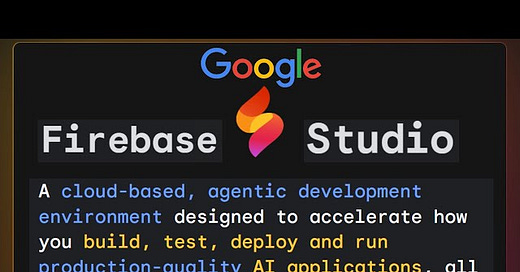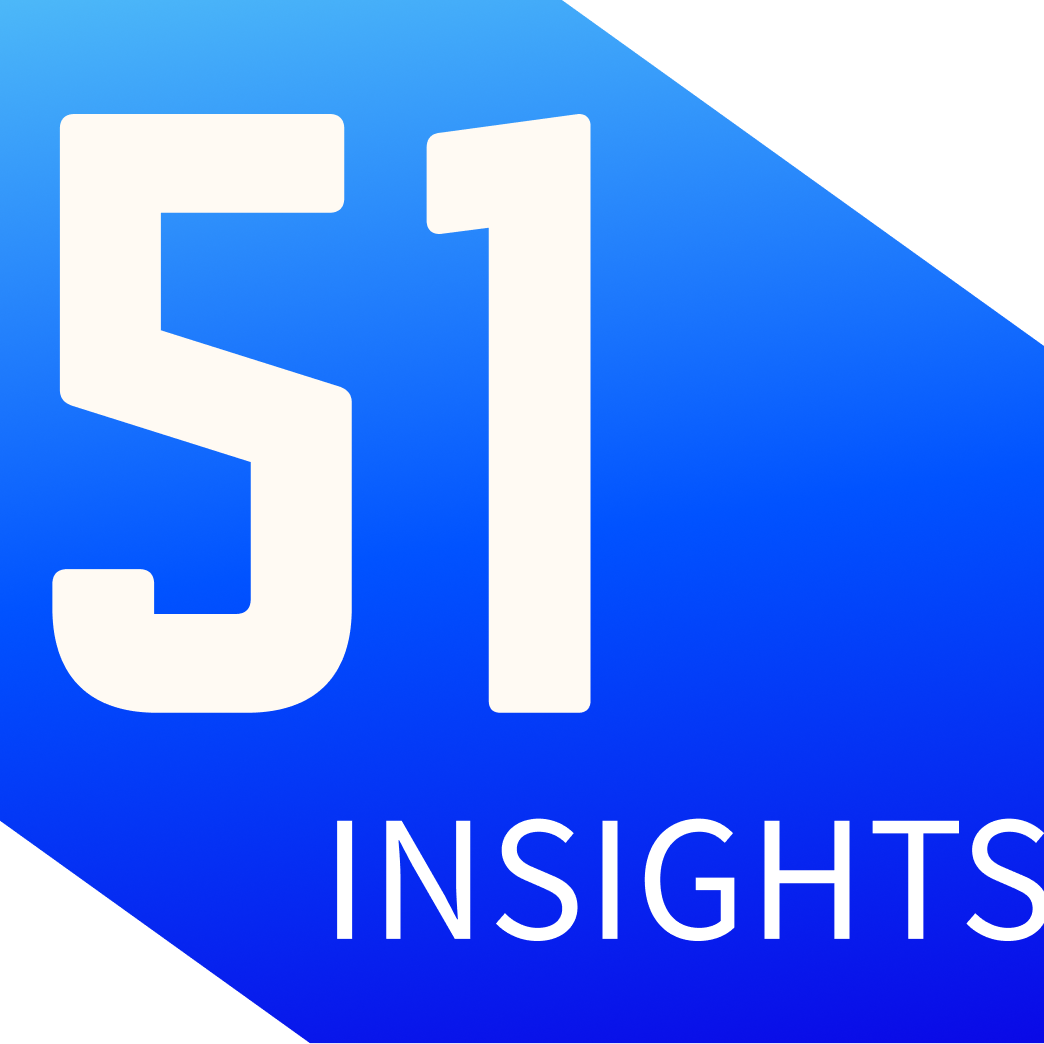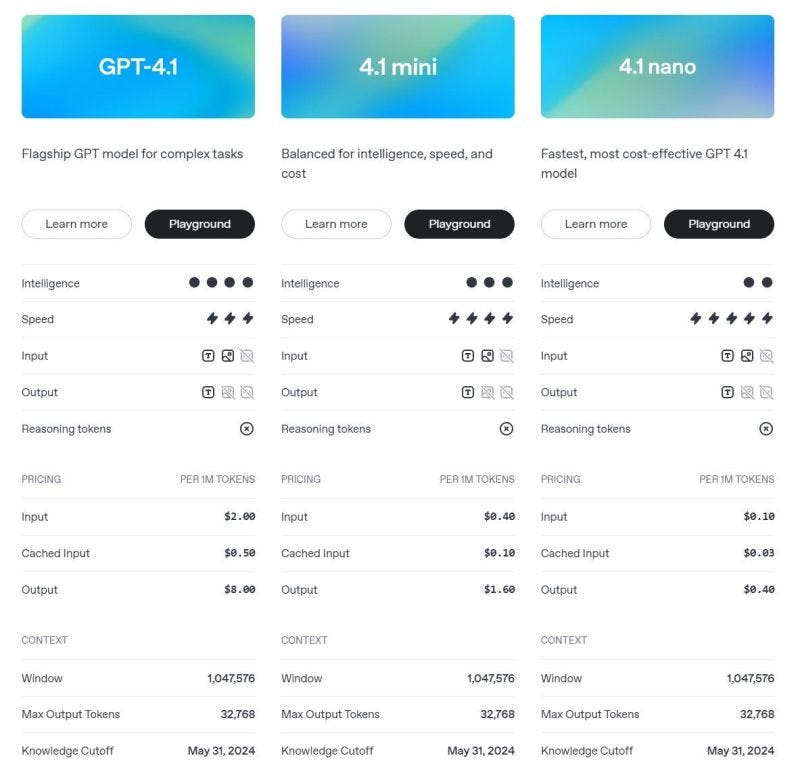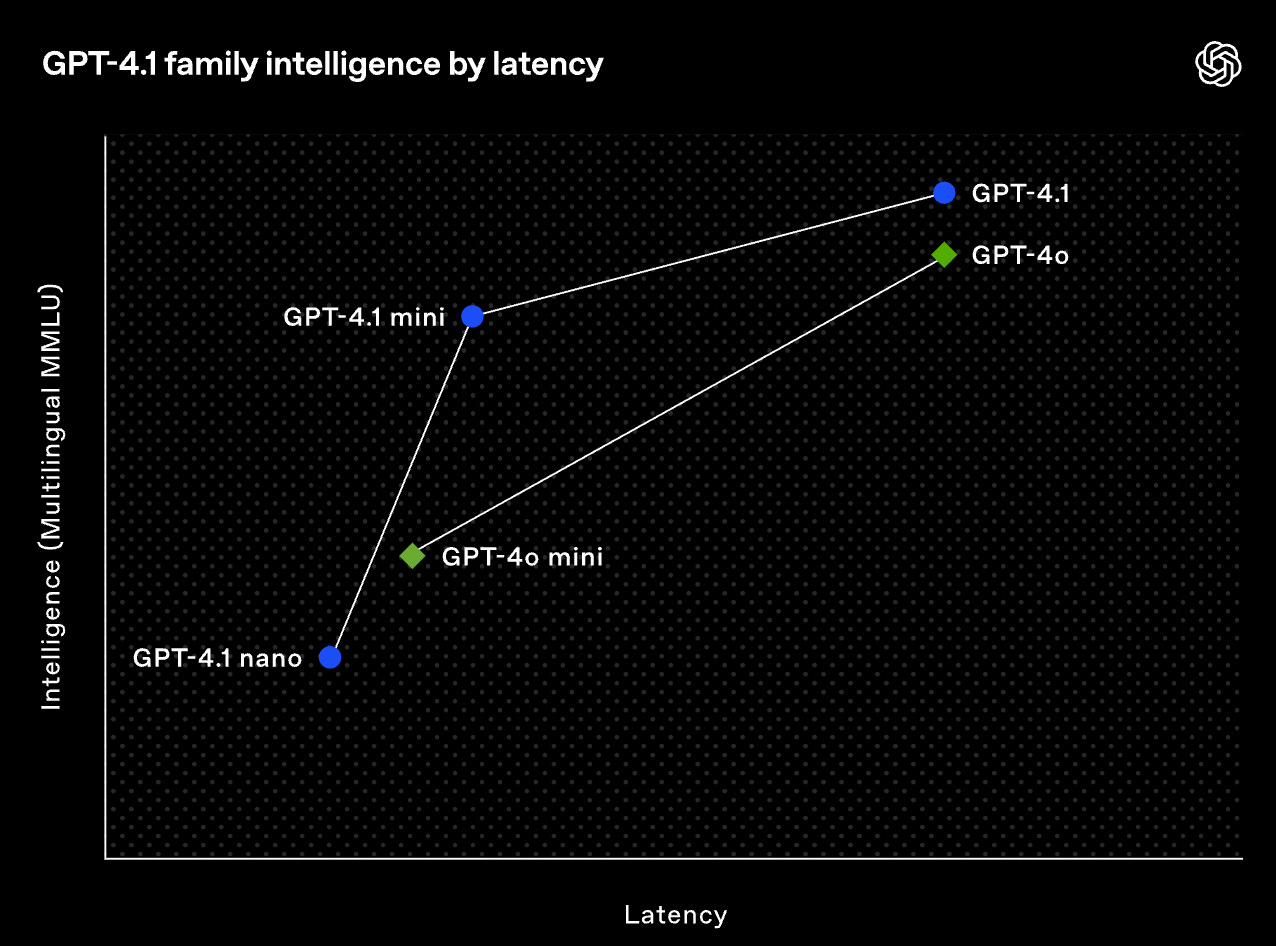#10: Google Takes Aim at Cursor
OpenAI to acquire Windsurf for $3B. OpenAI drops GPT-4.1 family. DeepMind rolls out Gemini 2.5 Flash. Grok launches Grok Studio. TARS launches Web3 AI lab on Solana. Apple speeds up Siri's overhaul.
Hi there, it’s Marc.
Google just launched Firebase Studio — a direct competitor to Cursor and Replit. While OpenAI plans to acquire Windsurf, the race of AI-powered coding tools in rising. Reportedly, OpenAI tried to acquire Cursor maker Anysphere twice before shifting focus to Windsurf in a $3B deal.
Also this week:
OpenAI introduced GPT 4.1 family
Google DeepMind launched Gemini 2.5 Flash
Grok launched Grok Studio
Apple speeds up Siri's overhaul
TARS launches Web3 AI lab on Solana
$VIRTUAL heads to Binance
And much more.
Let’s dive in 👇
The Ultimate AI Vendor Intelligence Platform
Discover, compare, and track AI vendors and agents in real time — powered by research and data, not hype. Join the waitlist for exclusive early access 👉
Top Reads
What is an AI agent? McKinsey & Company. Link
Google's Agent Bombshell. 51x. Link
The Human Algorithm. Michael Bass. Link
On AI: Memory, Identity, and Lock-In. John Battelle. Link
Importance of AI software 'glue' tools like MCP. Michael Parekh. Link
How AI is changing what it means to be a researcher. Link
Intro into the Bittensor ecosystem. Link
Alpha
Web2
Google DeepMind launched Gemini 2.5 Flash, new AI model allowing users to adjust its reasoning depth based on budget, optimizing cost versus performance for tasks like chat apps or data extraction.
Grok launched Grok Studio, a new xAI feature enabling real-time collaboration on documents, code, reports, and browser games, integrating with Google Drive for file management.
OpenAI is reportedly in talks to acquire AI coding assistant startup Windsurf for around $3B — its biggest potential deal yet.
Anthropic’s Claude now offers “Research” and Google Workspace integration, letting it search the web and your work context to deliver faster, more comprehensive answers.
Google launched Firebase Studio — a direct competitor to Cursor – and it's free.
Apple’s AI-powered Siri upgrade is now expected this fall, not 2026 — signaling a possible course correction ahead of WWDC25.
Web3
Sahara AI Studio is a new platform integrating the entire AI development process—data management, model training, compute resources, and secure storage—into one decentralised system to streamline workflows.
Griffain's platform on Solana streamlines complex crypto tasks like launching memecoins, creating video NFT candy machines, and airdropping tokens through guided "Workflows."
TARS Research, launched by TARS Protocol, is an AI-focused research lab built for the Solana blockchain, aiming to advance Web3 and AI integration.
Arbius V5 integrates decentralized AI with Arbitrum, enabling models to earn rewards through useful computational tasks, not energy-intensive mining.
The system incentivizes autonomous, censorship-resistant AI development using crypto rewards.
👉Enjoying 51x? Subscribe to our Web3 newsletter for business leaders
OpenAI introduces GPT‑4.1 family
OpenAI releases three new models: GPT‑4.1, 4.1 Mini, and 4.1 Nano. New benchmarks, bigger context windows, and the first-ever nano model. [Playground]
Why it matters: GPT-4.1 isn’t just smarter. It’s faster, cheaper, and can handle way more context (up to 1M tokens). That means better performance on real-world tasks — from coding to customer support.
Key gains:
→ Coding: Solves 55% of real-world coding tasks (vs. GPT-4o’s 33%).
→ Instruction Following: More accurate and reliable.
→ Long Context: Handles and understands huge files better than ever.
Better AI models = smarter agents, faster product builds, less friction for devs.
Zooming in: GPT-4.1 mini’s 83% cost reduction enables broader AI deployment, allowing small and medium enterprises to compete with larger players. For example, startups can integrate AI chatbots without significant budget increases.
𝗚𝗣𝗧‑𝟰.𝟭:
Processes up to 𝟭M 𝘁𝗼𝗸𝗲𝗻𝘀—that’s about 750,000 words in a single prompt.
Achieves 𝟱𝟰.𝟲% on SWE-bench Verified, a 𝟮𝟭.𝟰% improvement over GPT‑4o.
Excels in instruction following with a 𝟯𝟴.𝟯% score on MultiChallenge, up 𝟭𝟬.𝟱%.
Sets a new benchmark in long-context understanding with 𝟳𝟮.𝟬% on Video-MME.
Features a knowledge cutoff of 𝗝𝘂𝗻𝗲 𝟮𝟬𝟮𝟰.
𝗚𝗣𝗧‑𝟰.𝟭 𝗠𝗶𝗻𝗶:
Delivers comparable intelligence to GPT‑4o.
Reduces latency by nearly 𝟱𝟬%.
Cuts costs by 𝟴𝟯%.
𝗚𝗣𝗧‑𝟰.𝟭 𝗡𝗮𝗻𝗼:
OpenAI’s smallest, fastest, and most affordable model.
Ideal for ultra-low-latency applications and edge computing.
Maintains the 𝟭M 𝘁𝗼𝗸𝗲𝗻 context window.
Bottom Line: GPT-4.1 isn’t just an upgrade. Its improved cost efficiency, coding abilities, and long-context processing make it a powerful tool for innovation and operational scale. But success depends on thoughtful integration and addressing privacy risks.
Companies that deploy it strategically stand to unlock new revenue, streamline workflows, and strengthen their competitive edge in an AI-first economy.
More links:
Top AI Agents by Mindshare
Some agents you want to keep an eye on:
$VIRTUAL ($369M): A framework and infrastructure designed to create, deploy, and monetize autonomous AI agents across various platforms and applications, such as gaming, entertainment, social interactions, and more.
$TRAC ($180M): A decentralized knowledge-sharing protocol and blockchain-based platform that uses a Decentralized Knowledge Graph (DKG) to organize, verify, and share trusted data and knowledge assets across industries.
$AI16Z ($147M): Solana-based web3 platform that employs a unique AI agent-driven VC investment model and community-driven DAO governance.
$FAI ( $119M): AI built with publicly available large language models (LLMs) and operates on the Base blockchain.
$PAAL ($114M): Personalized, advanced AI assistants and applications, particularly for crypto investors and broader digital communities.
That’s it for now.
– Marc & team










